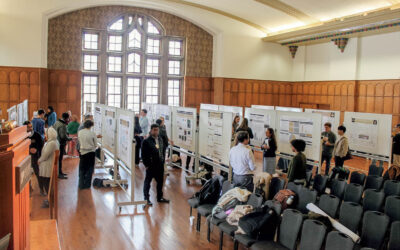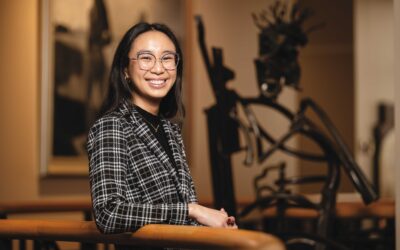Tuesday, January 7, 2025
The Purdue College of Pharmacy is pleased to honor and recognize the outstanding research and scholarship generated by our faculty. This article highlights Ryan Altman, for the recent publication, “Deoxytrifluoromethylation/aromatization of cyclohexan(en)ones to access highly substituted trifluoromethyl arenes,” which can be read in Nature Communications.
Researchers at Purdue University have unveiled a groundbreaking chemical method that could transform the development of pharmaceuticals, agrochemicals, and advanced materials.
The study was directed by Ryan Altman, who is the Steve and Lee Ann Taglienti Chair in Pharmacy and a professor in the Borch Department of Medicinal Chemistry and Molecular Pharmacology (BMCMP). It introduces a novel strategy to synthesize trifluoromethyl arenes—fluorinated compounds vital to drug development and other industries—through a strategy that complements existing methods by exploiting distinct starting materials that offer endless opportunities to build customized products. This reaction was published in Nature Communications.
The research addresses a long-standing challenge in creating these compounds. Traditional approaches often involve harsh conditions, limited substrate availability, or poor selectivity, restricting access to many desired molecules. The new strategy converts readily available cyclohexanones into highly functionalized trifluoromethyl arenes in just one or two steps, making previously inaccessible compounds attainable.
This advancement is particularly impactful for the pharmaceutical industry, where fluorination is critical for enhancing the stability, solubility, and efficacy of drug candidates. Nearly 40 percent of recent FDA-approved drugs feature at least one fluorine atom, highlighting the importance of efficient fluorination techniques.
“This reaction enables chemists to access new therapeutic candidates, biological probes, and even polymers with specialized properties,” Altman said. “The ability to selectively install fluorinated groups under mild conditions opens doors to previously unimaginable possibilities.”
The project originated during the COVID-19 shutdown, a period that forced Altman’s team to think creatively while lab work was on hold. The initial concept of converting phenols into fluorinated compounds evolved into a streamlined process that sparked interest among pharmaceutical industry leaders.
Next steps for the research include extending the method to other fluorinated functional groups and improving reaction conditions to further broaden its applicability to pharmaceutically significant molecules.
Beyond this specific study, Altman’s group continues to focus on developing innovative fluorination techniques, exploring how fluorinated compounds influence drug behavior, and supporting medicinal chemistry collaborations across a spectrum of therapeutic areas, including pain, anxiety, aging, and immuno-oncology.
“By addressing these long-standing synthetic challenges, we’re not only advancing chemistry but also helping to create tools for discovering the next generation of therapeutics,” Altman said.
Altman’s collaborators on the study are Pankaj Bhattarai, a PhD student in BMCMP; and Mohammed K. Abd El-Gaber and Suvajit Koley, both former postdoctoral research associates in BMCMP.




